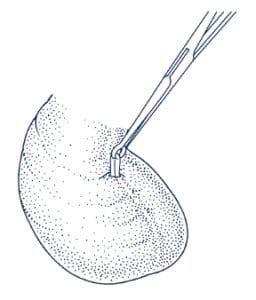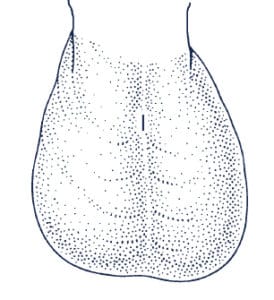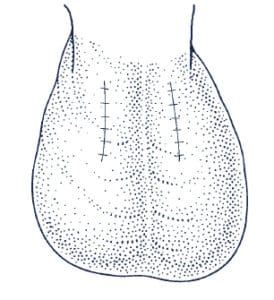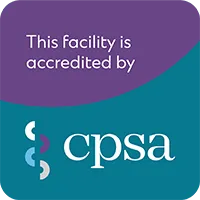Ensuring Sterilization – Fascial Interposition
Our doctors also carry out what many studies describe as a crucial step called fascial interposition. This step involves tying the sheath or covering of the vas over one end of the cut tube with a dissolving thread to create a natural barrier between the two cut ends. This is an additional insurance that sperm will not be able to get into your semen after vasectomy. Not only is the vas tube blocked by heat cauterization, but it is also covered with a protective sheath.
Fascial interposition can be carried out using titanium metal clips which are left permanently in the scrotum, or with dissolvable thread. Dr. Crouse’s and Dr. van der Merwe’s preferences are to use the dissolvable thread so as not to leave any foreign bodies in the scrotum.
The fine tubes are then gently placed back into the scrotum, and the tiny opening heals within days and soon becomes invisible.
With the no-scalpel technique, there is very little bleeding. No stitches are needed to close the tiny opening, which heals quickly without a scar.









